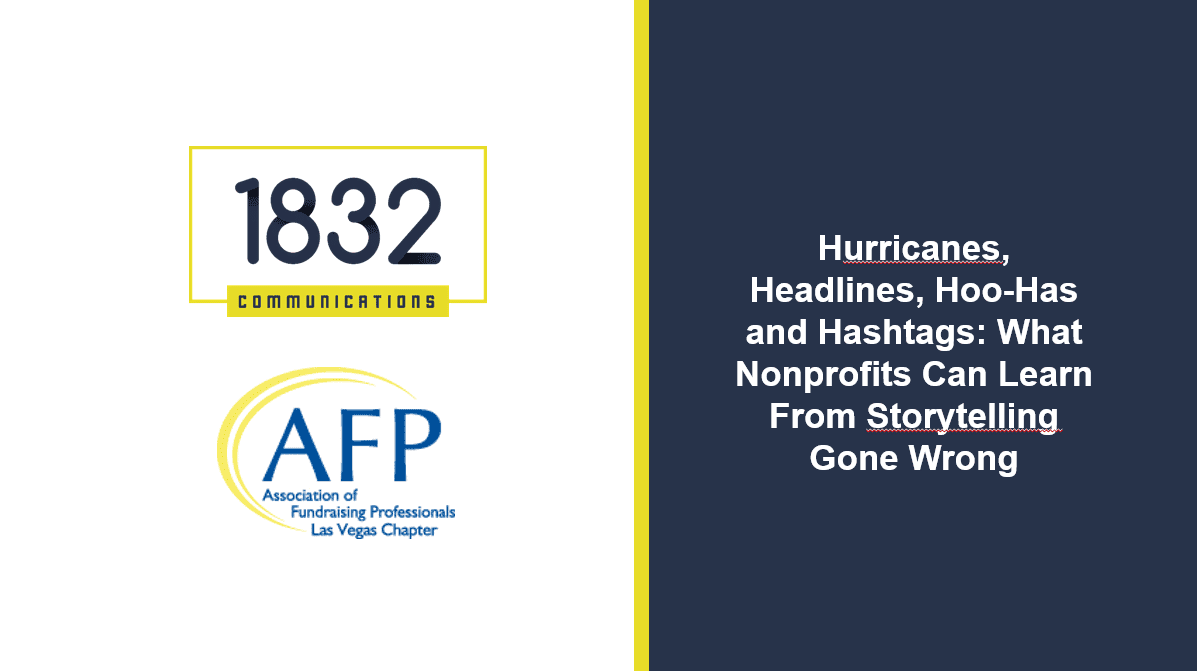“The wise learn many things from their enemies.” – Aristophanes
The Intelligence community in the U.S.- CIA, FBI, NSA- have a very difficult job: To mine data so they can thwart attacks, carry out tactical operations and keep American interests safe at home and around the world.
Businesses also mine data for “competitive intelligence” (CI), allowing them to learn as much about their competition as possible. In the past, securing this vital information sometimes was the result of subterfuge or industrial espionage. But thanks to the Internet, it’s all there for the taking- and 100% legal.
Nonprofit Intelligence
More and more nonprofits are competing for donor’s attention and money. Each organization has a website, engages on numerous social media platforms, has an active email marketing apparatus and utilizes online digital tools to the fullest extent possible.
OK, so I know that’s not always the case but humor me for a minute.
Every nonprofit thinks they’re unique and no one else does what they do. The fact is that’s almost never true. There’s always another organization who might not do EXACTLY what you do but it’s similar enough.
Nothing wrong with that except: You have to be able to differentiate and market yourself to prospective donors. That means you need to know what competing organizations are telling those same prospective donors.
I know that at the end of the day, your goals are the same as your competitor’s: Do the most good for the most people. In order to do that, short of merging your organizations, you need to raise funds. Part of that is being able to answer when a donor asks: But how are you different from Nonprofit X?

Photo by Tim Gouw on Unsplash
Answering that question includes knowing what your competition offers. How? Gathering data. Here are three places to start:
Website
Websites are where nonprofits are going to present not only their best face but the largest volume of information about their mission and their activities. Reading the homepage, about us, program and donation pages will give you a good idea of the fundraising jargon and keywords a nonprofit uses to market itself. You’ll also see how they weave stories into their overall content.
Does the website have a blog? Annual report? Take some time to read them!
Websites have tons of content to sift through. You’ll get a pretty good idea of what they’re presenting to donors. Given that information, how will your nonprofit put its best foot forward?
Social Media
Facebook, Twitter, Instagram, YouTube. It’s all public. The content is sitting there, waiting for you to review.
A good scan of another organization’s activity can include:
- Learning from their best and worst practices (do they only broadcast or do they share content from other people, for example).
- Do they engage their audience? Are people leaving comments and does the organization respond to those comments?
- Once again, read the content. You can get an idea of their content marketing strategy from their posts.
- Don’t have time to read right now but want to know what they’re posting? Follow them!
This one is the easiest: Sign up for their email news! You’ll learn more about their programming, their fundraising activities, interesting and creative programming and much more. Check to see how their emails look on mobile, how they make donors feel special (or not) and what types of pictures and content they’re using.
At the end of the day, if you’re not bringing added value to the table, people will not pay attention to you. And as I mentioned above, competition is fierce so you better stand out!
Intelligent Collaboration
None of the above means you should steer clear of competing nonprofits. Far from it! I am a big proponent of NPO’s working together on specific projects aimed at helping more people. A partnership allows you to pool resources to reach a wider audience and potentially increases your chances of receiving funding from foundations and private donors.
Before you team up, CI rules apply: Check out your potential partner and make sure they have a solid web, email and social media presence. Once you have determined they are a good fit, create a joint strategy to work together and consider creative ways to spread the word.
If your nonprofit fails to raise enough funds to serve your constituents, you’ll have to shut down. Why not apply the business practice of gathering competitive intelligence and use it to further your NPO’s goals?
Because knowing is half the battle.
Hi nonprofit pro! NOW’S the time to be engaging with your donors. Since you might not be able to in person, let’s give your digital communications and marketing a kickstart, so we can give a boost to your bottom line!




